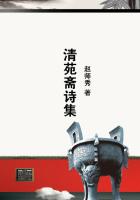"If anything will keep it within call," mused the ape-man as he returned to the tree in which he had cached his own portion of his kill, "it is the knowledge that I will feed it." But as he finished his repast and settled himself comfortably for the night high among the swaying branches of his eyrie he had little confidence that he would ride into A-lur the following day upon his prehistoric steed.
When Tarzan awoke early the following morning he dropped lightly to the ground and made his way to the stream.Removing his weapons and loin cloth he entered the cold waters of the little pool, and after his refreshing bath returned to the tree to breakfast upon another portion of Bara, the deer, adding to his repast some fruits and berries which grew in abundance nearby.
His meal over he sought the ground again and raising his voice in the weird cry that he had learned, he called aloud on the chance of attracting the gryf, but though he waited for some time and continued calling there was no response, and he was finally forced to the conclusion that he had seen the last of his great mount of the preceding day.
And so he set his face toward A-lur, pinning his faith upon his knowledge of the Ho-don tongue, his great strength and his native wit.
Refreshed by food and rest, the journey toward A-lur, made in the cool of the morning along the bank of the joyous river, he found delightful in the extreme.Differentiating him from his fellows of the savage jungle were many characteristics other than those physical and mental.Not the least of these were in a measure spiritual, and one that had doubtless been as strong as another in influencing Tarzan's love of the jungle had been his appreciation of the beauties of nature.The apes cared more for a grubworm in a rotten log than for all the majestic grandeur of the forest giants waving above them.The only beauties that Numa acknowledged were those of his own person as he paraded them before the admiring eyes of his mate, but in all the manifestations of the creative power of nature of which Tarzan was cognizant he appreciated the beauties.
As Tarzan neared the city his interest became centered upon the architecture of the outlying buildings which were hewn from the chalklike limestone of what had once been a group of low hills, similar to the many grass-covered hillocks that dotted the valley in every direction.Ta-den's explanation of the Ho-don methods of house construction accounted for the ofttimes remarkable shapes and proportions of the buildings which, during the ages that must have been required for their construction, had been hewn from the limestone hills, the exteriors chiseled to such architectural forms as appealed to the eyes of the builders while at the same time following roughly the original outlines of the hills in an evident desire to economize both labor and space.The excavation of the apartments within had been similarly governed by necessity.
As he came nearer Tarzan saw that the waste material from these building operations had been utilized in the construction of outer walls about each building or group of buildings resulting from a single hillock, and later he was to learn that it had also been used for the filling of inequalities between the hills and the forming of paved streets throughout the city, the result, possibly, more of the adoption of an easy method of disposing of the quantities of broken limestone than by any real necessity for pavements.
There were people moving about within the city and upon the narrow ledges and terraces that broke the lines of the buildings and which seemed to be a peculiarity of Ho-don architecture, a concession, no doubt, to some inherent instinct that might be traced back to their early cliff-dwelling progenitors.
Tarzan was not surprised that at a short distance he aroused no suspicion or curiosity in the minds of those who saw him, since, until closer scrutiny was possible, there was little to distinguish him from a native either in his general conformation or his color.He had, of course, formulated a plan of action and, having decided, he did not hesitate in the carrying out his plan.
With the same assurance that you might venture upon the main street of a neighboring city Tarzan strode into the Ho-don city of A-lur.The first person to detect his spuriousness was a little child playing in the arched gateway of one of the walled buildings."No tail! no tail!" it shouted, throwing a stone at him, and then it suddenly grew dumb and its eyes wide as it sensed that this creature was something other than a mere Ho-don warrior who had lost his tail.With a gasp the child turned and fled screaming into the courtyard of its home.
Tarzan continued on his way, fully realizing that the moment was imminent when the fate of his plan would be decided.Nor had he long to wait since at the next turning of the winding street he came face to face with a Ho-don warrior.He saw the sudden surprise in the latter's eyes, followed instantly by one of suspicion, but before the fellow could speak Tarzan addressed him.
"I am a stranger from another land," he said; "I would speak with Ko-tan, your king."
The fellow stepped back, laying his hand upon his knife."There are no strangers that come to the gates of A-lur," he said, "other than as enemies or slaves."
"I come neither as a slave nor an enemy," replied Tarzan."I















